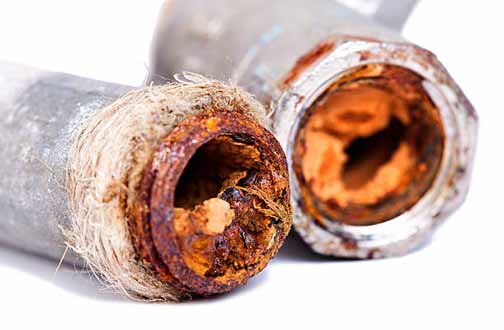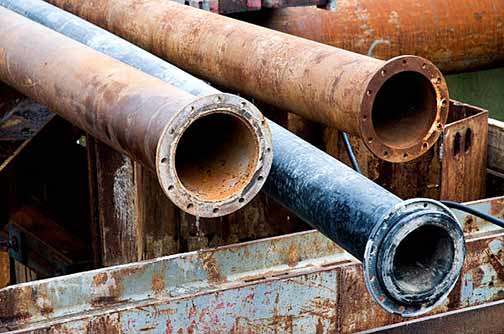The Hidden Dangers of Cast Iron Drain Pipes
Cast iron drain pipes were the industry standard for many years due to their strength, durability, and resilience. However, over time, these pipes can degrade, leading to numerous problems for homeowners. Understanding the hidden dangers of cast iron drain pipes is crucial in ensuring the safety and efficiency of your home’s plumbing system.
One of the main issues with cast iron drain pipes is corrosion. As water and other materials flow through the pipes, they can cause the iron to rust and break down. This corrosion can lead to leaks, blockages, and even complete pipe failure. Furthermore, rust particles can contaminate your water supply, posing a potential health risk.
Another significant danger is the buildup of mineral deposits. Over time, these deposits can constrict the flow of water, causing slow drains and increased pressure on the plumbing system. This can result in frequent clogs and the need for constant maintenance and repairs.
Additionally, cast iron drain pipes can develop cracks and fractures due to ground movement or changing temperatures. These cracks can allow tree roots to infiltrate the pipes, exacerbating blockages and causing further damage. In severe cases, this can lead to costly repairs and even the need for complete pipe replacement.
Signs That Your Cast Iron Drain Pipes Need Replacement
As a homeowner, it is essential to recognize the signs that your cast iron drain pipes need replacement. Early detection can save you from extensive damage and costly repairs.
One of the most obvious signs is recurring leaks. If you find yourself frequently fixing leaks in your plumbing system, it may be time to consider replacing your cast iron pipes. Leaks not only waste water but can also cause structural damage to your home.
Another sign is slow drains. If you notice that your sinks, tubs, or toilets are draining slower than usual, it could be due to mineral buildup or blockages in your cast iron pipes.
Foul odors emanating from your drains can also indicate problems with your cast iron pipes. As these pipes age, they can develop cracks and allow sewer gases to escape into your home, creating an unpleasant and unhealthy environment.
If you hear unusual noises, such as gurgling or bubbling sounds, when using your plumbing fixtures, it could be a sign of compromised cast iron pipes. These noises often indicate trapped air or blockages within the pipes.
Lastly, visible rust on your pipes is a clear indication that they are deteriorating and need replacement. Rust weakens the structural integrity of the pipes and can lead to leaks and other issues.
The Advantages of Modern Pipe Materials
Replacing your old cast iron drain pipes with modern alternatives offers numerous advantages. Modern pipe materials, such as PVC (polyvinyl chloride) and ABS (acrylonitrile butadiene styrene), provide superior performance and durability compared to cast iron.
One of the main advantages of PVC and ABS pipes is their resistance to corrosion. Unlike cast iron, these materials do not rust or degrade over time, ensuring a longer lifespan and reduced maintenance costs.
Modern pipe materials are also lightweight and easier to install. This simplifies the replacement process and reduces labor costs. Additionally, their smooth interior surfaces prevent the buildup of mineral deposits and reduce the likelihood of clogs.
PVC and ABS pipes are also chemically resistant, making them suitable for a wide range of applications. They can withstand exposure to various chemicals and substances without deteriorating, ensuring reliable performance in different environments.
Furthermore, these modern materials are more flexible than cast iron, reducing the risk of cracks and fractures due to ground movement or temperature changes. This flexibility also makes them less prone to damage from tree roots.
Another significant advantage is the cost-effectiveness of modern pipe materials. While the initial investment may be higher than repairing cast iron pipes, the long-term benefits, such as reduced maintenance and extended lifespan, make it a worthwhile investment.
The Cost of Replacing Cast Iron Drain Pipes
Understanding the cost of replacing cast iron drain pipes is essential for homeowners considering an upgrade to their plumbing system. Several factors can influence the overall cost, including the size of your home, the extent of the plumbing system, and the specific materials used for replacement.
The cost of replacing cast iron drain pipes typically includes labor, materials, and any necessary permits or inspections. Labor costs can vary depending on the complexity of the project and the region where you live. On average, homeowners can expect to pay between $3,000 and $6,000 for a complete replacement.
The choice of materials also plays a significant role in determining the cost. PVC and ABS pipes are generally more affordable than other alternatives, such as copper or stainless steel. However, it is essential to consider the long-term benefits and durability of these materials when making your decision.
Permits and inspections are often required for plumbing replacements to ensure compliance with local building codes and regulations. These costs can vary but are typically a small portion of the overall expense.
While the cost of replacing cast iron drain pipes may seem significant, it is essential to consider the potential savings in maintenance and repair costs over time. Investing in modern, durable materials can save you money in the long run and provide peace of mind.

Choosing the Right Professionals for the Job
Replacing cast iron drain pipes is a complex and labor-intensive project that requires expertise and experience. Choosing the right professionals for the job is crucial in ensuring a successful and efficient replacement process.
When selecting a local plumbing company, consider their experience and reputation. Look for professionals who specialize in pipe replacement and have a proven track record of successfully completing similar projects. Reading reviews and seeking recommendations from friends and family can also help you find a reputable contractor.
It is essential to verify that the plumber is licensed and insured. A licensed professional ensures that the work complies with local building codes and regulations, while insurance protects you from potential liabilities in case of accidents or damages during the project.
Obtaining multiple quotes from different plumbers can help you compare prices and services. However, it is essential to avoid choosing a plumber solely based on the lowest price. Instead, consider the overall value, including the quality of materials, workmanship, and warranties offered.
Effective communication is also crucial in ensuring a smooth replacement process. Choose a plumber who is responsive and willing to address any concerns or questions you may have throughout the project.
Finally, ensure that the plumber provides a detailed written estimate and contract outlining the scope of work, timeline, and costs. This documentation can help prevent misunderstandings and protect your investment.
Preparing Your Home for Pipe Replacement
Replacing cast iron drain pipes can be a significant project that may cause disruptions to your daily life. Properly preparing your home for the replacement process can help minimize inconvenience and ensure a smooth transition.
Start by clearing the work area of any obstacles or personal belongings. This allows the plumbing contractors to work efficiently and reduces the risk of damage to your property. Additionally, cover any furniture or valuable items near the work area to protect them from dust and debris.
Inform your family members about the project and the expected timeline. Ensuring everyone is aware of the potential disruptions to water access and other utilities can help you plan accordingly and make necessary adjustments to your daily routines.
Consider creating a temporary kitchen or bathroom setup if the replacement process will affect these critical areas. This can help you maintain some level of comfort and convenience during the project.
Make arrangements for any pets or small children to stay in a safe and secure area away from the work zone. Keeping them away from the construction area ensures their safety and prevents any interference with the contractors’ work.
Finally, communicate with your neighbors about the project, especially if you live in a densely populated area. Informing them about the potential noise and disruptions can help maintain good relations and mitigate any concerns they may have.
The Long-Term Benefits of Replacing Cast Iron Drain Pipes
The decision to replace cast iron drain pipes offers numerous long-term benefits that can enhance the overall functionality and value of your home.
One of the most significant benefits is the improved efficiency of your plumbing system. Modern pipe materials, such as PVC and ABS, provide a smooth interior surface that prevents mineral buildup and reduces the likelihood of clogs. This ensures a more efficient and reliable flow of water throughout your home.
Replacing cast iron drain pipes also reduces the risk of leaks and water damage. Modern materials are resistant to corrosion and deterioration, ensuring a longer lifespan and reducing the need for frequent repairs and maintenance.
Furthermore, replacing outdated pipes can improve the overall water quality in your home. Corroded cast iron pipes can release rust particles and other contaminants into your water supply, posing potential health risks. Upgrading to modern materials ensures a cleaner and safer water supply for you and your family.
The enhanced durability of modern pipe materials also means fewer disruptions to your daily life. With reduced risk of leaks, blockages, and other plumbing issues, you can enjoy peace of mind and focus on other important aspects of homeownership.
Lastly, replacing cast iron drain pipes can increase the value of your home. A modern, efficient plumbing system is an attractive feature for potential buyers, making your property more appealing in the real estate market. Investing in pipe replacement not only benefits you but can also provide a return on investment if you decide to sell your home in the future.
Conclusion: A Necessary Upgrade for Homeowners
Replacing cast iron drain pipes is a necessary upgrade for homeowners looking to enhance the safety, efficiency, and value of their homes. The hidden dangers of corroded and deteriorating cast iron pipes pose significant risks, from leaks and water damage to compromised water quality and costly repairs.
Recognizing the signs that your cast iron pipes need replacement is crucial in preventing extensive damage and maintaining a reliable plumbing system. Modern pipe materials, such as PVC and ABS, offer numerous advantages, including corrosion resistance, durability, and cost-effectiveness.
While the cost of replacement may seem significant, the long-term benefits, including reduced maintenance, improved efficiency, and enhanced home value, make it a worthwhile investment. Choosing the right professionals for the job and properly preparing your home for the replacement process can ensure a smooth and successful upgrade.
Ultimately, replacing cast iron drain pipes is a proactive step towards safeguarding your home and providing a safe and efficient plumbing system for you and your family. It is an investment that pays off in the long run, offering peace of mind and improved quality of life for homeowners.


